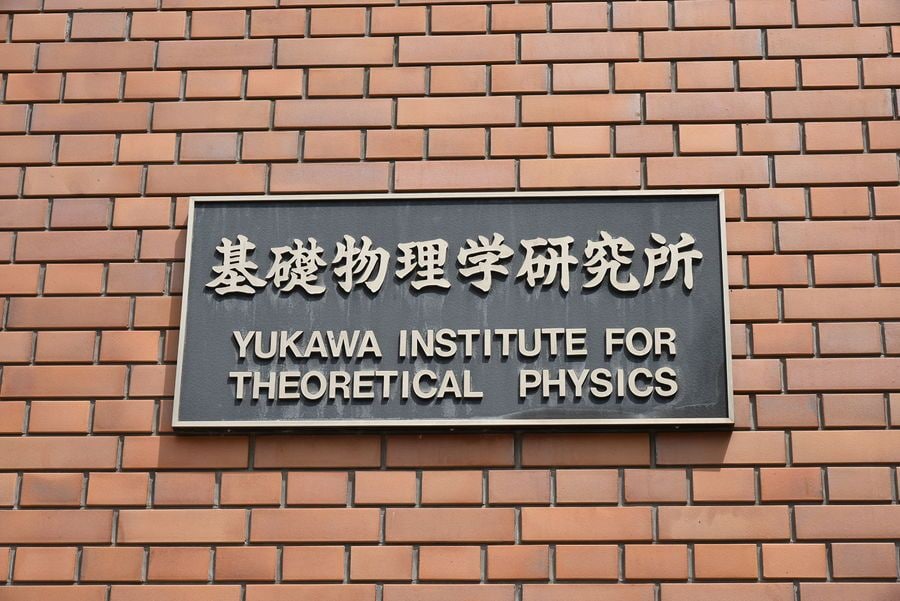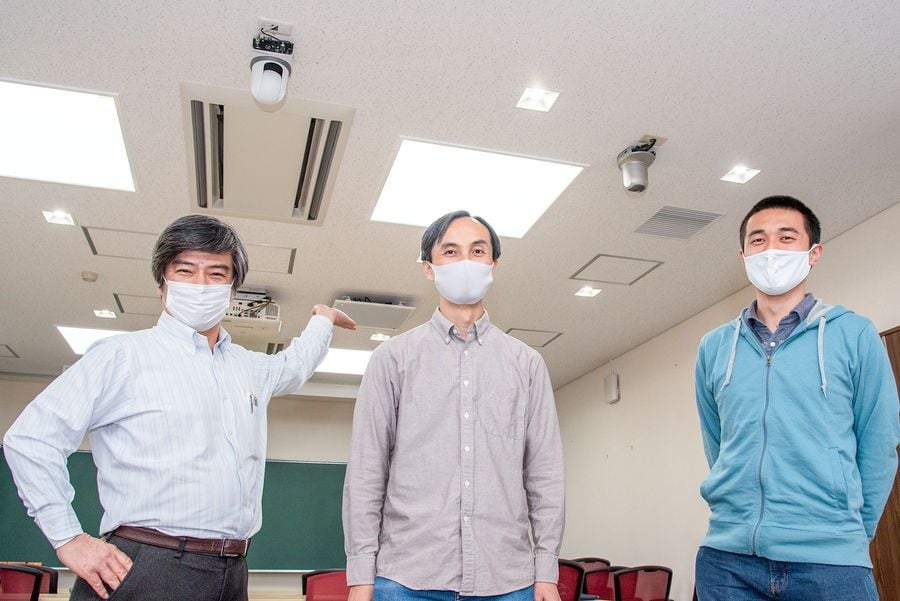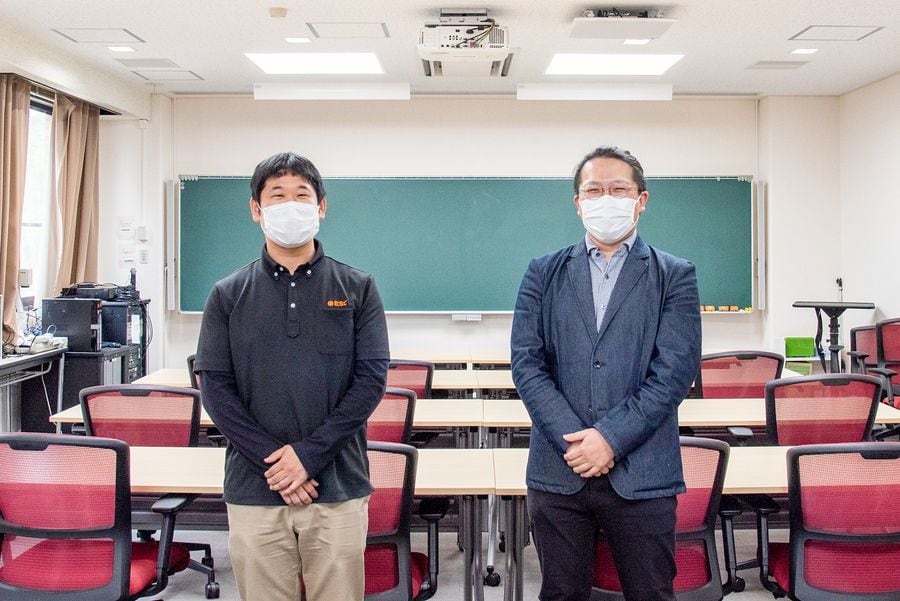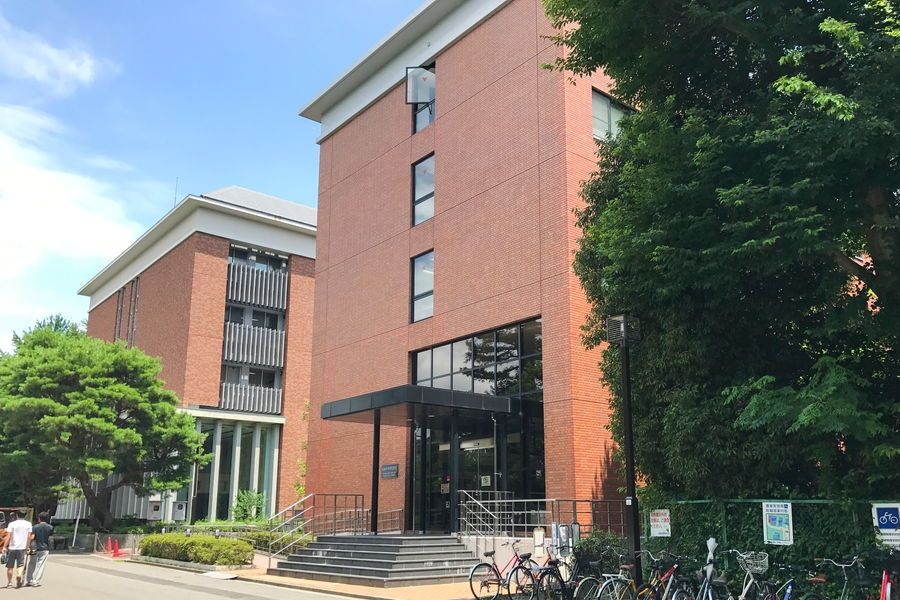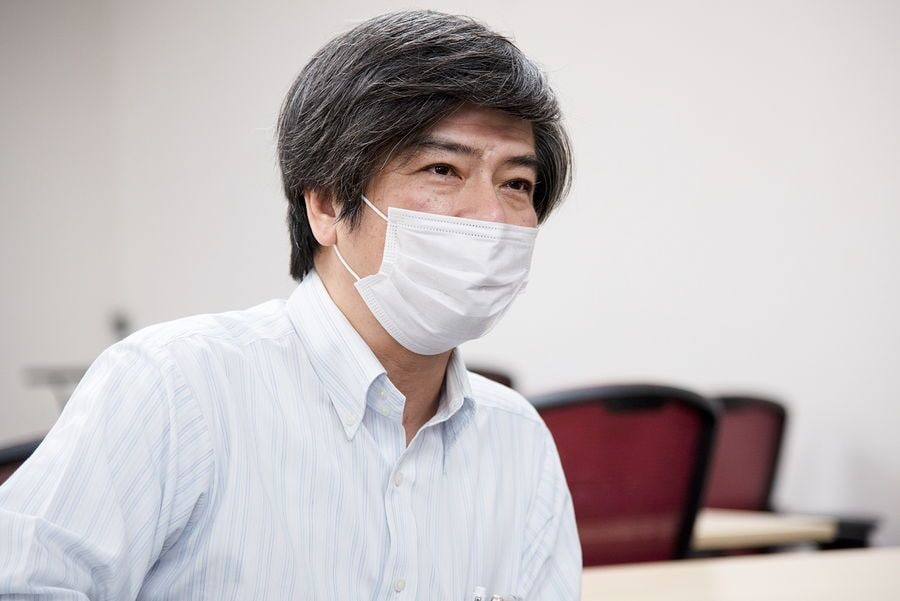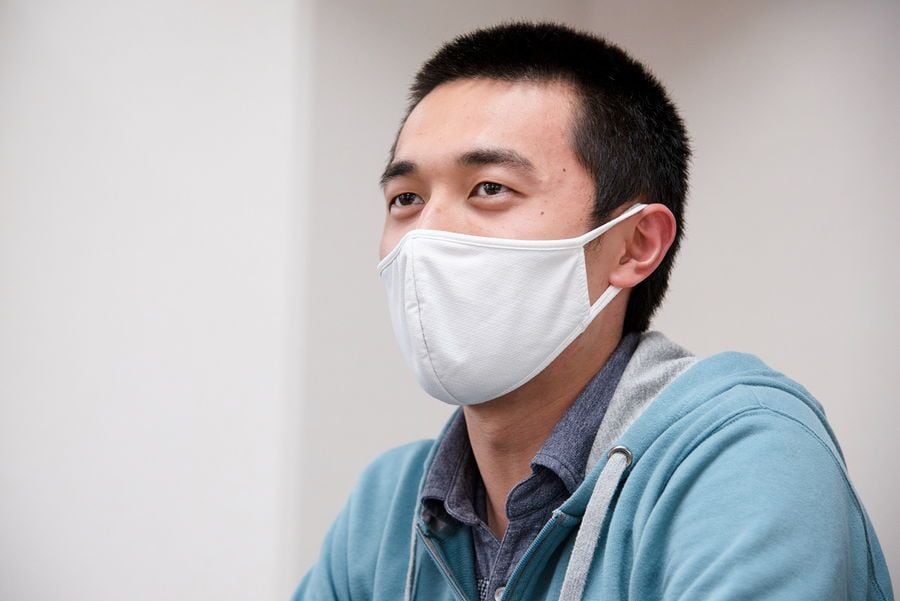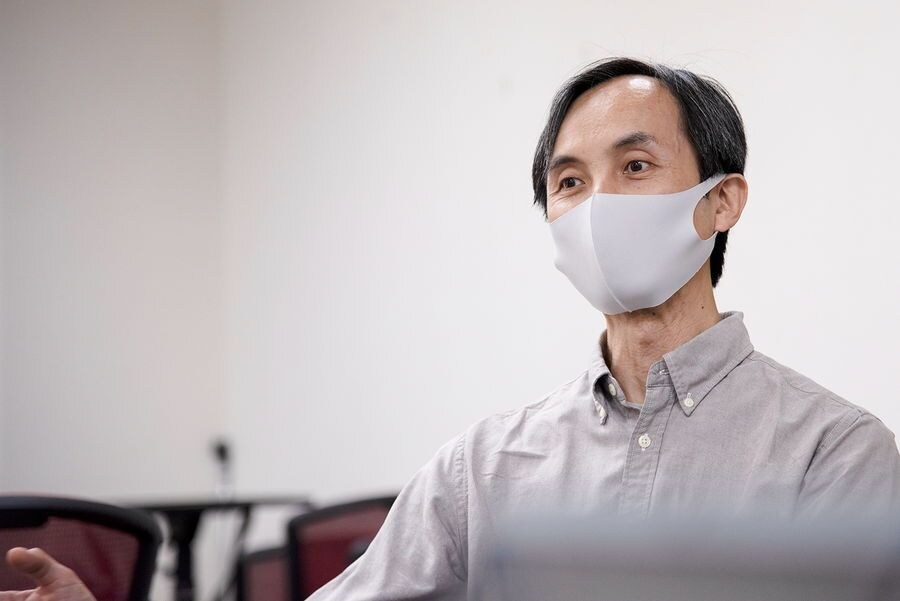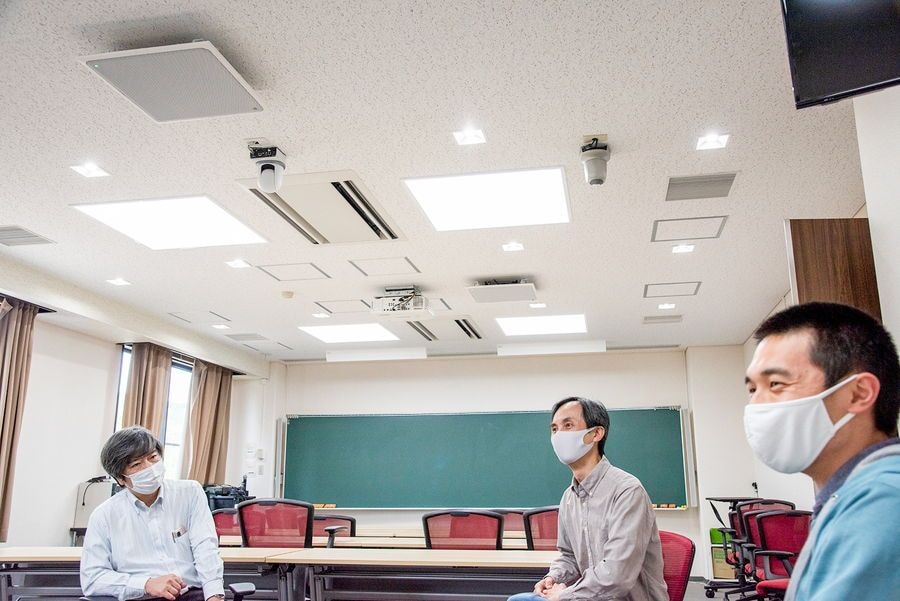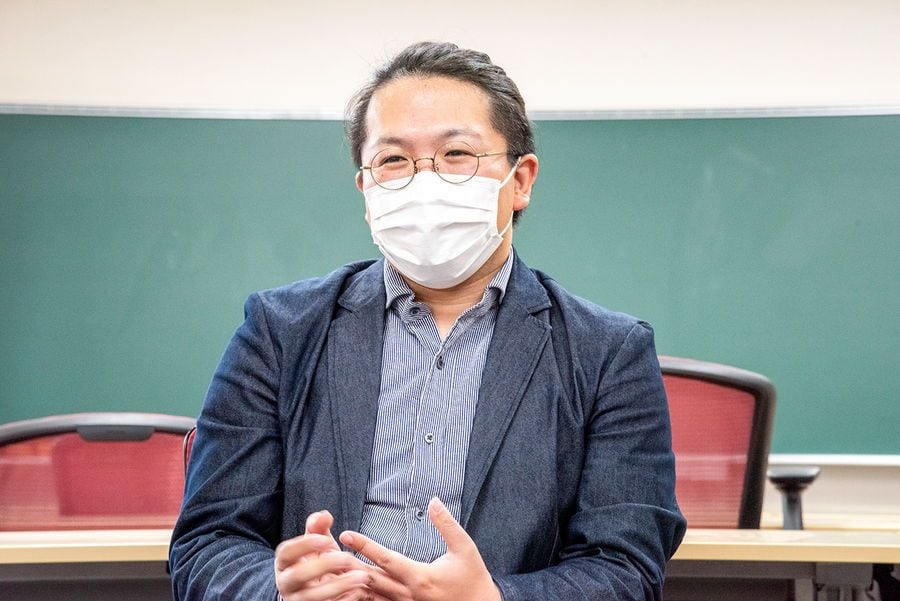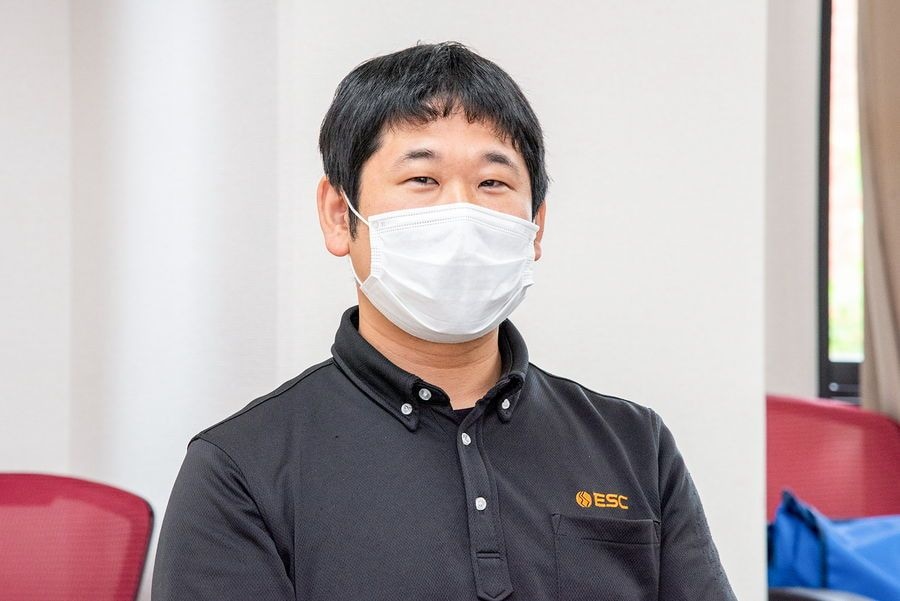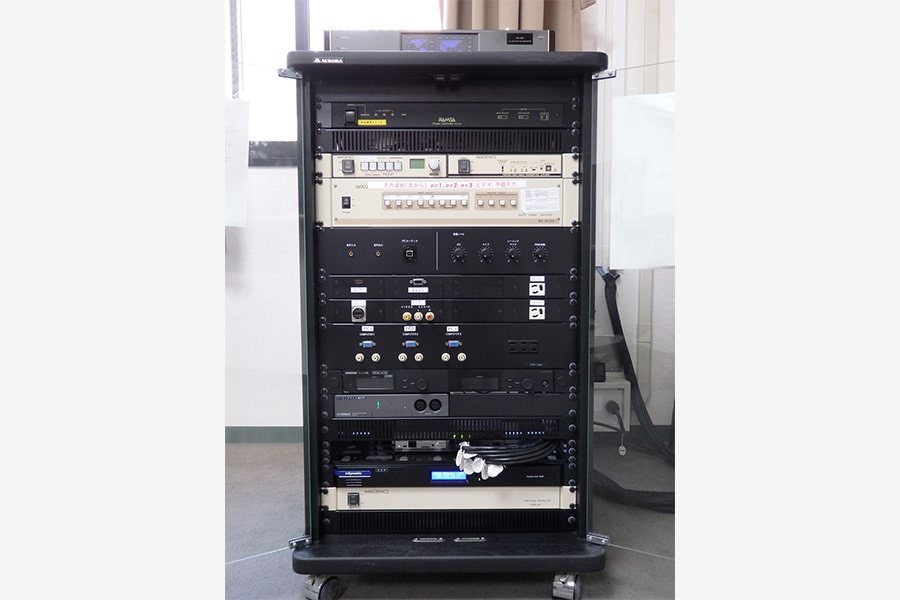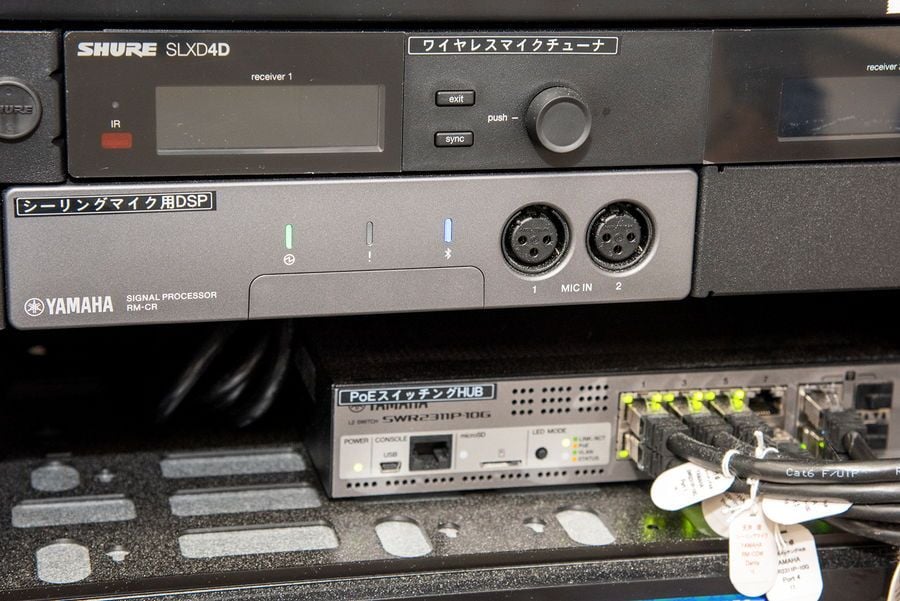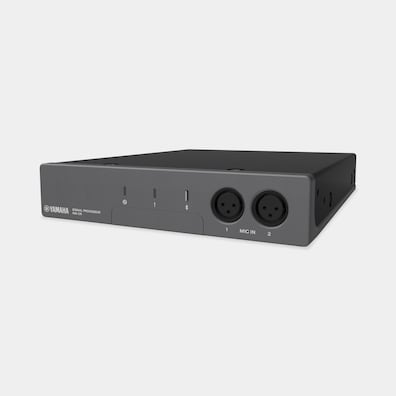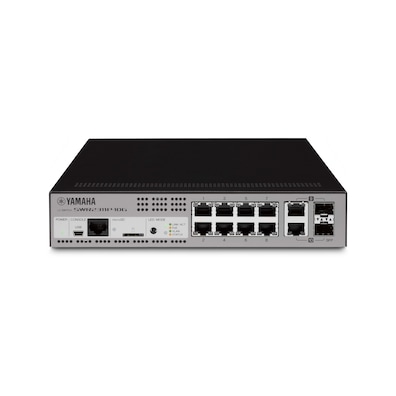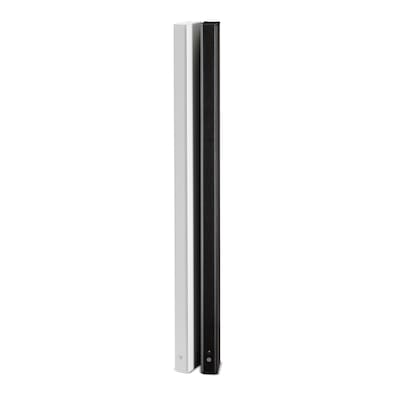Growing need for hybrid meetings in schools and companies alike
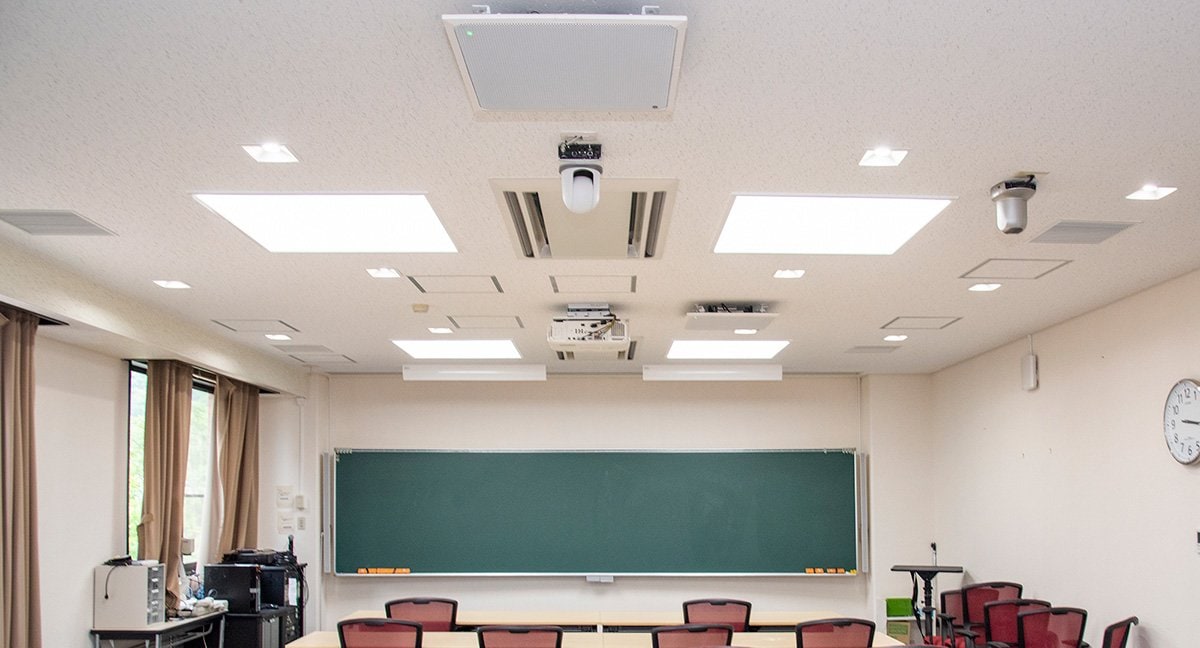
Founded in 1953 to commemorate the winning of the Nobel Prize by Dr. Hideki Yukawa, the Yukawa Institute for Theoretical Physics, Kyoto University plays a central role in theoretical physics education and research in Japan. It is also Japan's first national collaborative research institute and is used by researchers throughout the country crossing boundaries between universities and research institutes. The Yukawa Institute for Theoretical Physics introduced Yamaha's one-stop sound solution for teleconferencing, called ADECIA. We talked to Professor Akira Onishi, Professor Shigeki Sugimoto and Futo Kanno of the Yukawa Institute for Theoretical Physics, Kyoto University, as well as Kazuma Nishimura and Akimasa Murata of EIZO SYSTEM CO., LTD., who were in charge of installing and constructing the system, about their reasons for introducing the system, how easy it is to use, and its constructability.
* ADECIA is a solution composed of a PoE-compatible L2 switch "SWR2311P-10G" and Dante/PoE-compatible line array speaker VXL1-16P. It is built around a ceiling array microphone RM-CG and a remote conferencing processor RM-CR and acts as an acoustic system equipped with all the devices required for remote conferencing.
Yukawa Institute for Theoretical Physics, Kyoto University from the left Professor Akira Onishi, Professor Shigeki Sugimoto, Mr. Futo Kanno
From the left, Mr. Kazuma Nishimura and Mr. Akimasa Murata of EIZO SYSTEM CO., LTD.
The coronavirus has made it necessary to establish a place where hybrid teleconferencing can be implemented as a joint research hub.
Please tell us about the Yukawa Institute for Theoretical Physics, here at Kyoto University.
Professor Onishi: The Yukawa Institute for Theoretical Physics is involved in five areas of theoretical physics. These include elementary particle theory, atomic nuclear theory, theoretical space physics, physical property theory, and quantum information. The Institute is also the first joint use and collaborative research hub in Japan. It assists and supports collaborative research among researchers from universities and research institutes all across Japan. More recently, our institute has also implemented a residential program targeting international collaborative laboratories.
Yukawa Institute for Theoretical Physics, Kyoto University
Professor Akira Onishi, Yukawa Institute for Theoretical Physics, Kyoto University
You introduced ADECIA to have a remote conferencing system. Can you describe how you made your decision?
Professor Onishi: This institute is a centralized entity where we can hold research meetings and international conferences as a collaborative-use research institute, by inviting researchers, but the coronavirus suddenly made that impossible. Therefore, our work was moved forward via remote meetings, but recently, hybrid-type meetings have become easier by allowing researchers to participate individually in Zoom meetings, and some researchers to get together in a real room. When I was considering the equipment we would need to setup such a system, Mr. Kanno said that ADECIA is good. After watching a demonstration video of ADECIA, Mr. Sugimoto and I fell in love at first sight and decided right then and there to implement it.
Mr. Kanno: We also conducted remote classes in adjacent halls. However, there is space with a capacity for 140 people to hold international conferences and the like, so we do it by passing around the hand-held microphone. However, this is not very suitable for promoting any sort of active discussion, so we wanted an environment in which we could conduct such meetings and such research meetings.
Yukawa Institute for Theoretical Physics, Kyoto University, Mr. Futo Kanno
Professor Sugimoto: In fact, hybrid meetings are often held in the hall, but no one can hear a comment by a participant in the hall if they do not have a microphone. For that reason, the participants had to use a hand-held microphone in the hall when they wanted to speak. However, this is counterproductive from the point of view of preventing infectious diseases, so we were forced to disinfect the microphone every time someone used it. It turned out to be very complicated and cumbersome.
Professor Shigeki Sugimoto, Yukawa Institute for Theoretical Physics, Kyoto University
The ceiling-mounted microphone saves the trouble and offers freedom to design the space
Professor Onishi: Either way, we need more rooms where we can conduct remote meetings because of the coronavirus. Last year, we set up three or four Yamaha speaker-phones YVC-1000 and their microphones to conduct remote meetings. However, I was concerned that we would need to install it every time, but if we could attach the microphone to the ceiling and implement other devices... That's where Mr. Kanno found ADECIA for us.
Mr. Kanno: I really sensed that web conferences were easy when we used YVC-1000, so I searched for Yamaha products that I could install in the ceiling and we found them online.
Mr. Kanno: In fact, this room is used for a variety of purposes. For example, tables are arranged in a circle for meetings, and we have a blackboard for use in seminars and study groups. In such cases, we will rearrange the desks and chairs such as facing them all forward toward the blackboard. Previously, I had to reinstall the microphone every time we rearranged the tables and chairs, but with ADECIA installed in the ceiling, we can rearrange the tables and chairs freely. This is extremely helpful because remote conferencing is available immediately when I turn the system on.
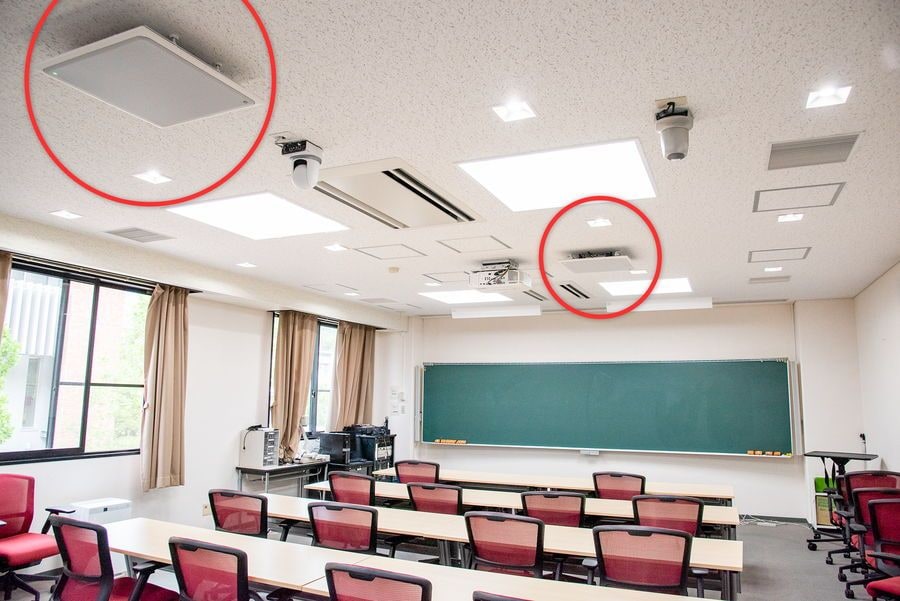
Classroom with the ADECIA ceiling microphone
ADECIA delivers clear audio from any seat in the conference room
How would you describe your impression of ADECIA and how easy it is to use, when you actually used the system?
Professor Onishi: The audio is overwhelmingly clear.
Mr. Kanno: I don't think I hardly ever heard anyone say they can’t hear me during a remote conference. Conversely, we have to be careful because we can hear every little whispered conversation! (laugh)
Professor Onishi: Mr. Sugimoto tends not to speak very loudly, but will the system pick up even his soft voice properly even at the other side of the room?
Professor Sugimoto: But I've never heard my own voice...
Mr. Kanno: Yes, we can hear it pretty well (laugh).
Professor Onishi: Speaking at a low volume outside the microphone's range is difficult for it to pick-up, but you will be heard if you raise your voice a bit. I think the best result is that you can hear the audio clearly no matter where someone is speaking in the room.
There is a growing need for hybrid meetings in schools and companies alike
From here, we spoke with Akimasa Murata and Kazuma Nishimura, the two men responsible for installing and constructing the video conferencing system. We wanted to get their perspective on the system. First, please briefly describe to us what the video conferencing system is capable of doing.
Mr. Murata: We listen to the various requests from companies, universities, and the like regarding video and audio systems, and then combine various products to propose a system, and further install and implement them. We are what you might call a video and audio system integrator.
Mr. Akimasa Murata, EIZO SYSTEM CO., LTD.
This time, the theme was to construct a hybrid teleconferencing system, but is such a need rapidly increasing because of the coronavirus?
Mr. Murata: Yes, it is. We have particularly noted an increase in schools. There is a very high need for half of the classroom to participate in the actual building, and the remaining half to participate remotely.
Mr. Nishimura: In fact, we were contacted because they wanted to build a hybrid system at Kyoto University.
Mr. Kazuma Nishimura, EIZO SYSTEM CO., LTD.
The installation of the ADECIA microphone and speakers is excellent.
EIZO SYSTEM handles many products related to teleconferencing systems, but can you tell us what benefits ADECIA offers?
Mr. Murata: Firstly, the RM-CG microphone is among lightest ceiling microphones that we handle, and it is quite compact. These features make it easier to build a system. Moreover, the performance is beyond what you would imagine.

The ceiling-installed RM-CG array microphone for classroom ceilings (white model)
What are your impressions of the line array speaker VXL1W-16P?
Mr. Murata: The VXL series of speakers has already been adopted by our company and elsewhere. I think it is highly installable. It offers a slim profile, so I think it is particularly good because it fits neatly and unobtrusively at both sides of any blackboard. In terms of sound, I felt that the amplification with the line array was adequately clear to reach all the way to the rear of the room, and that although it is quite compact, the bass was well expressed.
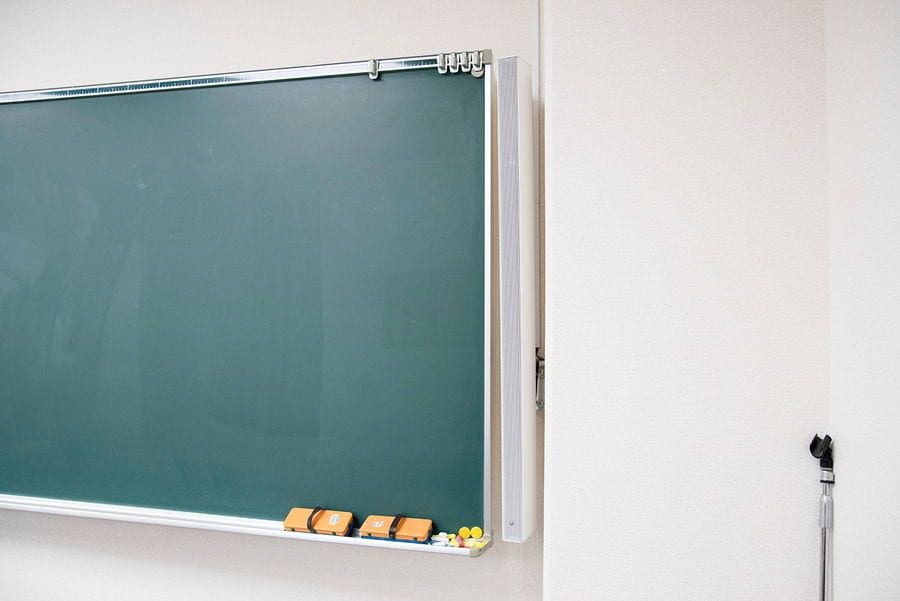
Dante/PoE-compatible line array speaker VXL1W-16P installed alongside a blackboard
ADECIA is a so-called one-stop sound solution that is specialized for teleconferencing. What is your company's opinion of this as a device for system integration?
Mr. Murata: ADECIA is a packaged product. However, because other devices can be added relatively freely, we can also propose a system in which we have changed the processor, microphone or speakers depending on the needs of the customer. It is easy for us to handle this system because it can be customized to a great detail.
We combine products from a variety of manufacturers to assemble our systems, but we want to use products from manufacturers that can be connected well technically. That’s because delivering a system to a company or a school also requires us to be a guarantor in a sense. Therefore, we like to use products that can be handled immediately in the unlikely event that we experience trouble. We are grateful toward Yamaha because of its generous technical support.
Acoustic Wagon
Rack-installed remote conferencing processor RM-CR and PoE-compatible L2 switch SWR2311P-10G
Thank you all very much for your taking time today to speak with us despite your busy schedules.
